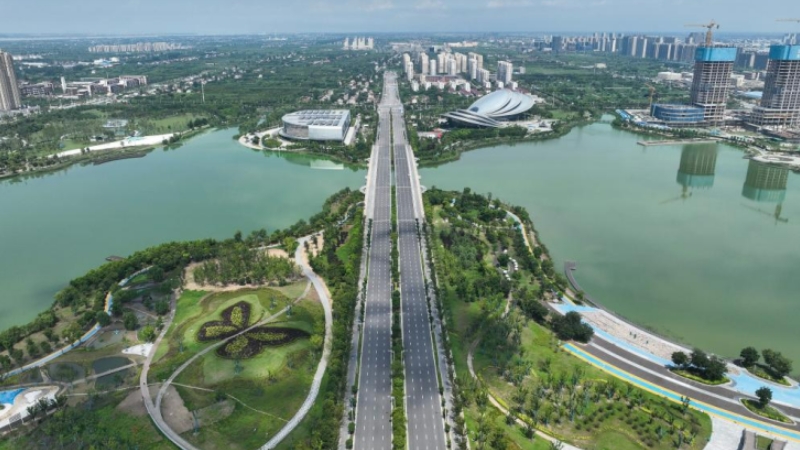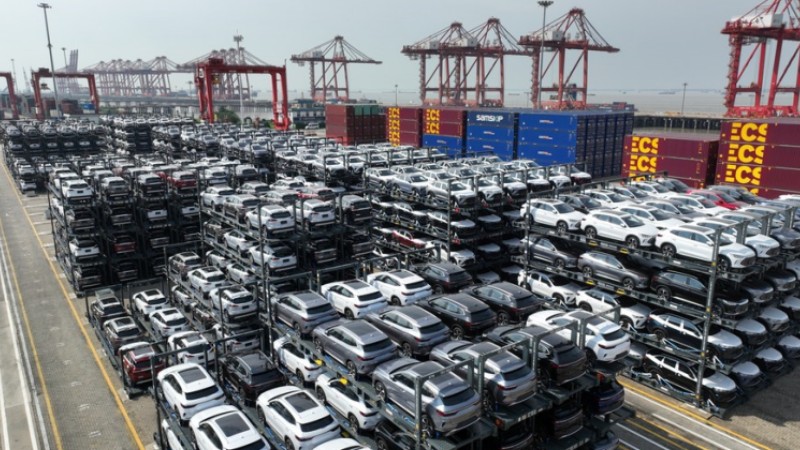Xinmin in NE China sows seeds of success with digital agriculture
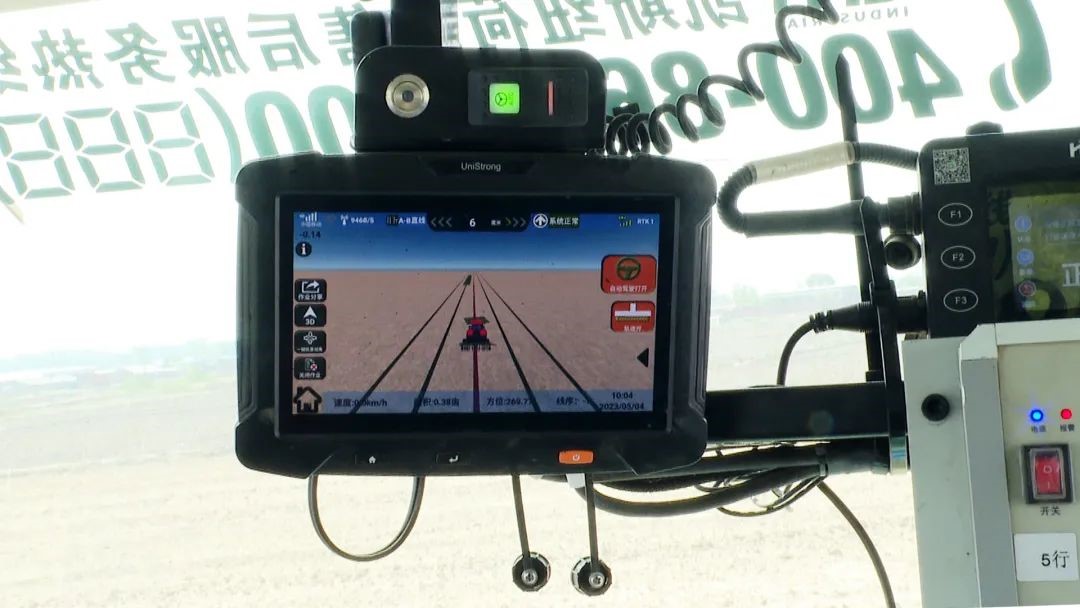
Photo shows a GPS device on an agricultural machine that helps farmers grow corns in Xinglongbao township, Xinmin, northeast China's Liaoning province. (Photo from the media center of Xinmin)
Even during the busiest farming season, Wang Shizhong, a major grain grower in Zhongguchengzi Village, Xinmin, northeast China's Liaoning province was still "taking his cool," as he knew he got everything under control with MAP Zhinong, a smart farming application on his mobile phone, which enabled him to check the satellite map of his farmland, the real-time weather for the next two hours, and soil moisture.
"Before, we had to manually measure farmland, check irrigation needs, and monitor crop growth ourselves. But now satellites collect that data for us, immediately flagging any problems and pinpointing issue locations. It significantly cuts down on field patrol work," Wang said.
In recent years, Xinmin has been actively promoting "digital agriculture" development, taking the lead in building a "digital twin agriculture base" for better farming and agricultural production.
At the end of May, Li Baoji, a farmer in Houshahezi village, Xinmin's Fahaniu township, planted some endive seedlings in his greenhouse. Afterwards, he took out his phone and scanned a QR code at the entrance of the greenhouse. Then he typed in relevant planting information, including crop type, planting area, planting time and expected ripening time and yield.
This QR code is the unique identity marker for each greenhouse in Xinmin. In addition to planting information updated by farmers, it also contains basic information like the greenhouse's geographic coordinates, area, and ownership.
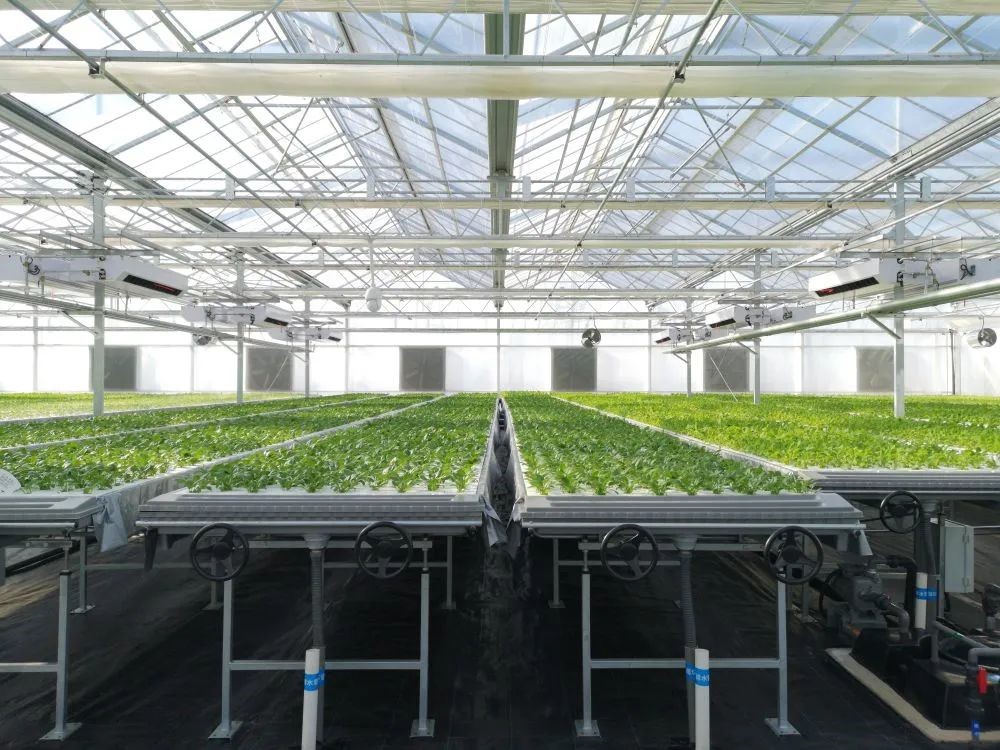
Photo shows the "plant factory" of Shenyang Qiushi Agricultural Sci-Tech Development Co., Ltd. in Xinmin, Liaoning province. (Photo provided by Shenyang Qiushi Agricultural Sci-Tech Development Co., Ltd.)
Vice director of Xinmin's agriculture and rural affairs bureau Leng Zhuojian said: "The information is collected by an integrated digital agriculture platform, which not only helps with ownership verification and management, but also offers farmers with industry information and marketing advice through big data analysis."
"Endive price is at a low in recent days, so we will adjust the temperature in the greenhouse to delay the time of ripening," said Li, while pressing a button to lower the shade curtains and open vents, which soon cooled down the greenhouse.
Xinmin currently has 55,000 greenhouses producing close to 1 million tons of facility vegetables annually. It is working to create a QR code for each greenhouse so as to provide digital traceability.
Leng said that big data will bridge data and information gaps for smallholders, offer data support for contract farming and improving the quality of farm produce supply, and thus raise farmers' incomes.
Shenyang Qiushi Agricultural Sci-Tech Development Co., Ltd. in Xinmin's Damintun township has a lab-like "plant factory." Rows of hydroponic vegetables are neatly planted there, soaked in the sunlight shed from above. There is a pipe system that provides water and nutrient solutions for the vegetables around the clock, and the growth of vegetables is shown on labels displaying plant information, including planting dates and expected harvest dates.
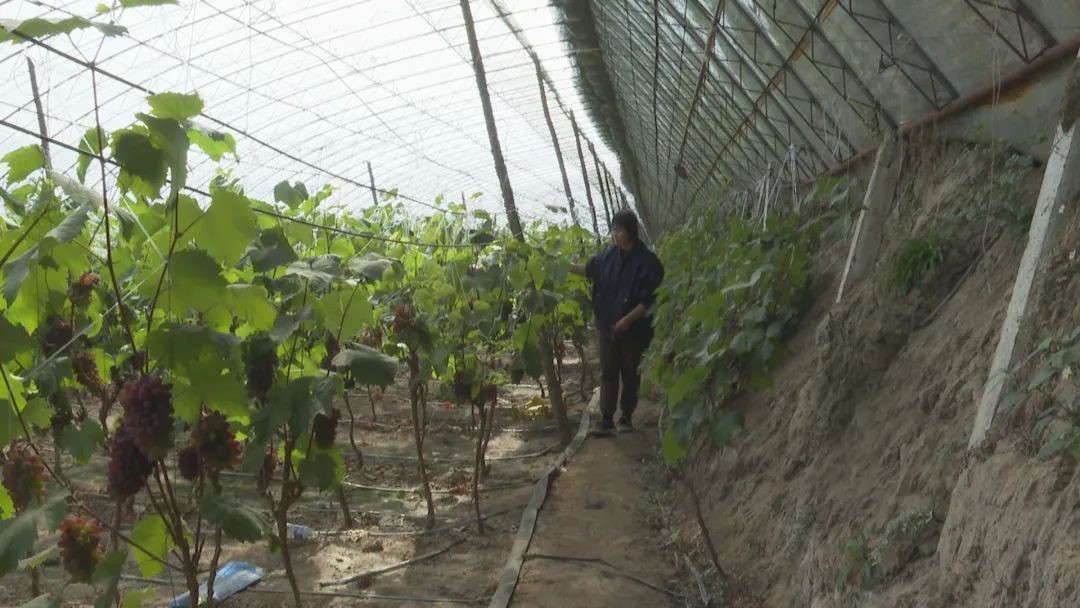
A farmer checks the growth of grapes in a greenhouse in Hantuozi village, Xinmin, northeast China's Liaoning province. (Photo from the media center of Xinmin)
"We're using precision agriculture to guide crop production. Through computer-controlled nutrient solutions, real-time monitoring data, and adjustment of nutrient ratios, we provide plants with exactly what they need 24 hours a day," said Chairman Luan Bing of the company.
According to him, the "plant factory" covers 5,000 square meters and produces 19 types of leafy vegetables weighing 40 tons each year. Soilless cultivation effectively prevents soil-borne plant diseases and insect pests, and the QR codes can enable full traceability, he added.
Following the example set by the "plant factory," Xinmin is building a digital twin modern agriculture demonstration park, said Li Shilong, director of Xinmin's agriculture and rural affairs bureau.
"With government investment, we will create a virtual replica of the park using 3D modeling and Internet of Things to link all greenhouse data. This will eventually allow integrated, intelligent management of the park and crops from sowing to harvest," Li said.
By promoting the application of network communication, Internet of Things, automation, and software technology throughout the agricultural value chain, Xinmin aims to refine agricultural production management and accelerate the transformation of traditional agriculture toward a modern one.
Photos
Related Stories
- Chinese vice premier stresses agricultural disaster mitigation, epidemic prevention
- Feature: Sci-tech drives smart agriculture in China's Heilongjiang
- An agricultural operation duo
- Zinc-enriched potato cultivation enriches farmers' livelihoods in northwest China
- Chinese experts showcase new seed varieties, technology at Uganda agricultural exhibition
Copyright © 2023 People's Daily Online. All Rights Reserved.







